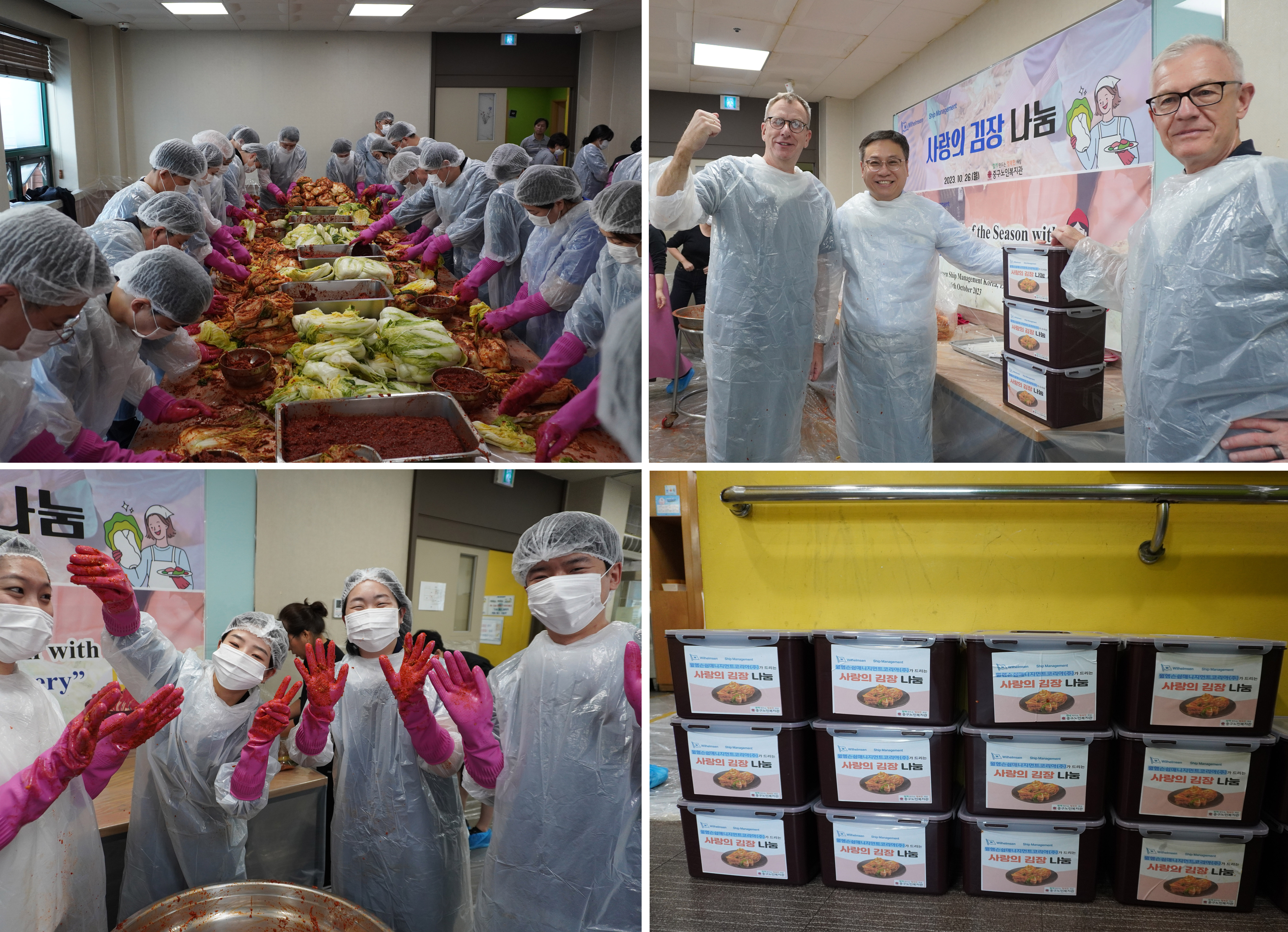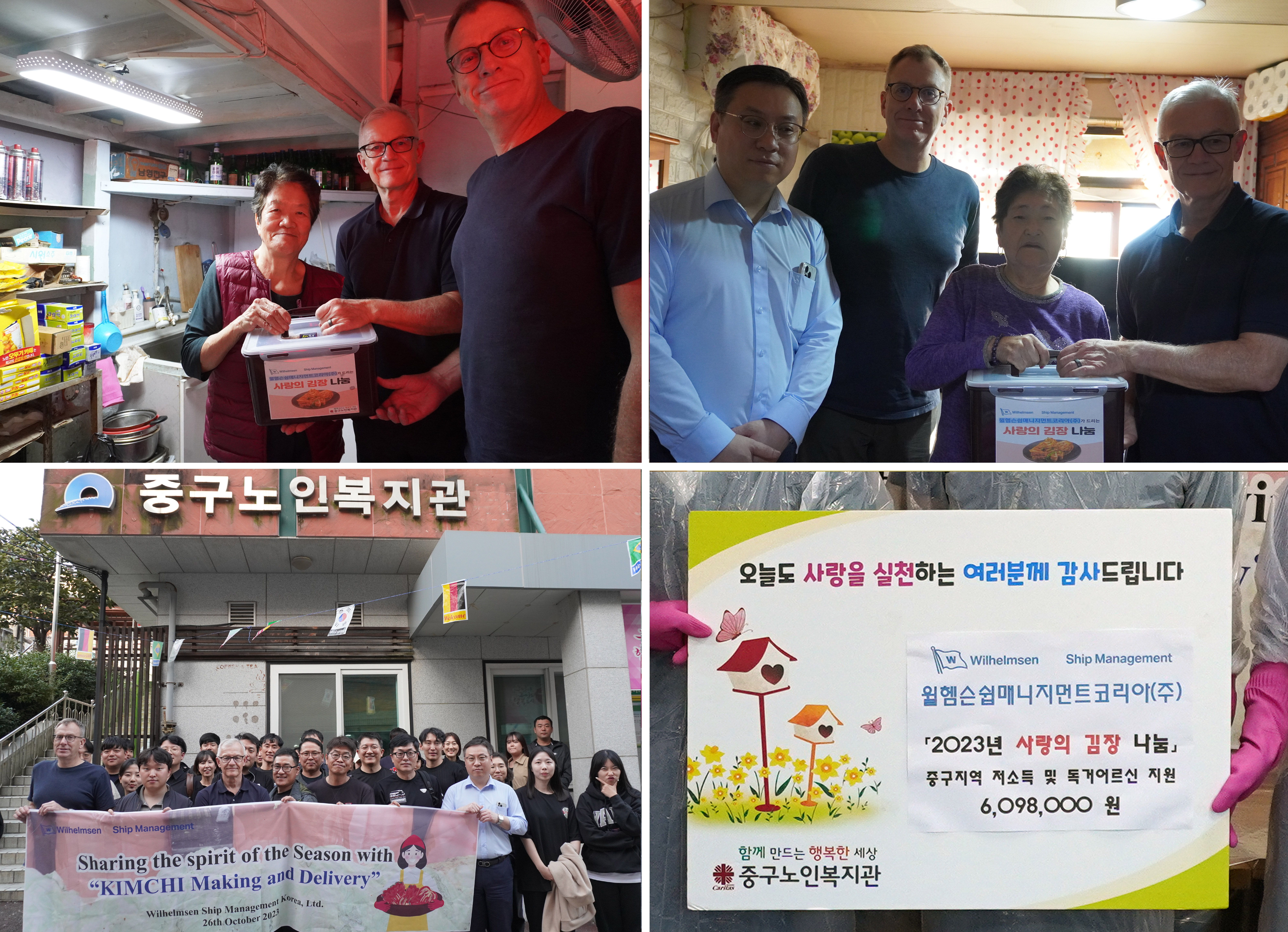Sharing a Taste of 650kg of Kimchi in Busan
Kimchi, the spicy fermented cabbage is a staple of Korean cuisine, became much more than a delicious side dish during our recent philanthropic project. It became a symbol of unity, teamwork, and the impact of giving back.
Our Korean team, along with a dedicated group of seafarers, rolled up their sleeves and embarked on a project to make and deliver an impressive 650kg of kimchi to the people of Busan, South Korea.

Making 650kg of kimchi is no easy feat, but we managed to do it!
The response from the community was truly heartwarming. We chose a personal touch, going door-to-door to deliver the kimchi directly to the homes of elderly residents in Busan. The smiles on their faces and the expression of appreciation were truly memorable.

Delivering kimchi to the residents of Busan, bringing smiles and warmth with each doorstep.
It wasn't just about the delicious kimchi; it was about sharing a piece of culture, showing support, and bringing a taste of comfort to those who might appreciate it most.
For those who would like to try making Kimchi at home, here's a simple recipe you can follow:
Ingredients:
Napa cabbage 1 head
Korean radish 1 cup, grated
Gochugaru (Korean chilli flakes) 1 cup
Garlic 6 cloves, minced
Ginger 1 tablespoon, minced
Salt 2 tablespoons
Korean pear juice 1/4 cup (optional)
Instructions:
1. Quarter the Napa cabbage with a knife and remove any hard parts.
2. Sprinkle the cabbage quarters with salt and let it sit for 2 hours.
3. Rinse the cabbage thoroughly under running water to remove the salt.
4. Combine the gochugaru, garlic, ginger, and Korean pear juice (if using) in a large bowl.
5. Add the grated radish to the kimchi paste and mix well.
6. Spread the kimchi paste evenly over the cabbage leaves.
7. Place the cabbage in an airtight container and let ferment at room temperature for 1-3 days or until the kimchi tastes sour and bubbly.
8. Store the kimchi in the refrigerator for up to 2 weeks.
Tips
- For a spicier kimchi, use more gochugaru.
- For milder kimchi, use less gochugaru.
- You can add other vegetables, such as carrots, scallions, or onions.